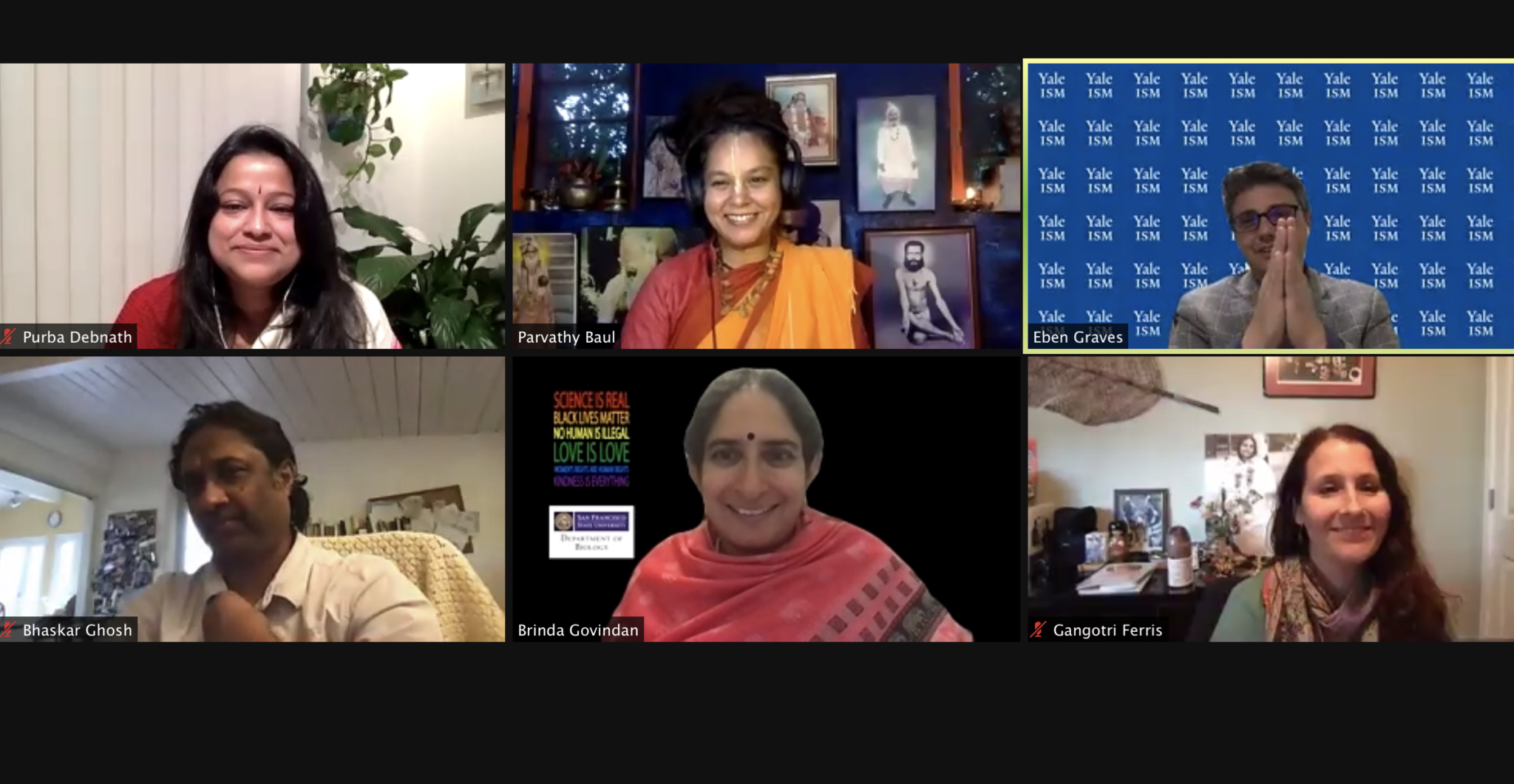
Sylvan Lebrun, Contributing Photographer
On Friday evening, renowned performer Parvathy Baul’s voice ranged from lively to sorrowful to passionate. With one hand, she plucked a long one-stringed instrument called an ektara and with the other, kept rhythm on a drum called duggi. She wore a red and gold traditional dress.
Baul performed in “Mystical Poetry of the Bauls: Presented by Parvathy Baul,” a virtual event organized by the Institute of Sacred Music and co-sponsored by the South Asian Studies Council. The event featured Baul’s pre-recorded performance and a Q&A section. Baul performed three songs, played two instruments and danced in front of an original tapestry.
“The Baul songs are the echo of the masters, the mystics, from generations,” Baul said in her introductory remarks at the event. “When you hear the song, you actually hear their voice, and the way they see the world. So, the Baul song is about the true sound in the human body … of the heart.”
The origins of Baul poetry can be traced back to the 8th-century. The tradition, involving poetry and performance, is a syncretic practice influenced by Sahajiya Buddhism, Turkish Sufism and Bengali Hinduism.
Baul performed her first song — an original composition — seated in a simple brick room. In the next two songs, she danced before her tapestry, in front of lit candles. English translations of the Bengali lyrics, touching on prayers about the moon, lotuses and the divine mother, were printed on the screen.
A Q&A section followed the performance screening. Academic and North Indian classical vocalist Purba Debnath moderated the section. In this segment, Baul explained the origins of the Baul tradition and its relationship with caste, gender, modernity and the divine.
Baul was originally an art student. She came into contact with the Baul tradition while sketching Baul practitioners for a class assignment.
In 2019, Baul received the Sangeet Natak Akademi Award — the highest national honor given to performing artists — from the government of India. She now teaches the tradition at an ashram in Bengal. She hopes to empower female performers to claim their space in the practice. During the pandemic, Baul provided financial support to 45 Baul families, or families that traditionally make this type of art, in Bengal and Bangladesh.
Even though the Baul tradition originally precluded women, Parvathy Baul’s worldwide success has helped break down gender barriers in the practice.
“Baul practice is never complete without the females,” Baul said. “I always say that you see my face, but there are hundreds and hundreds of women behind me. I am just a spokesperson for them.”
Eben Graves, program manager at ISM, explained his decision to invite Baul to share her art. He said he tries to find different performance traditions to represent a spectrum of religious and spiritual thought.
“[The Baul tradition] is a very syncretic performance tradition in South Asia that shows different connections between all these different religious identities. I just think it’s valuable to show these kinds of marginalized traditions at Yale,” Graves said.
The event was originally designed to be an in-person live performance. However, this was not possible during a pandemic. Graves said the ISM instead decided to use a pre-recorded video of Baul’s performance to prevent technical issues.
One attendee at Friday’s event was Tim Hoffman, an intercultural performing artist and scholar based in Japan, who has worked with Baul performers in the past.
Hoffman noted that Baul had “tremendous” knowledge about the tradition. He added that he was impressed with how well the music translated over a virtual format.
“It was just kind of a perfect event,” Hoffman said. “I mean people were really amazed at her art.”
In 2005, the Baul performance tradition was named a “Masterpiece of the Oral and Intangible Heritage of Humanity” by UNESCO.
Sylvan Lebrun | sylvan.lebrun@yale.edu







